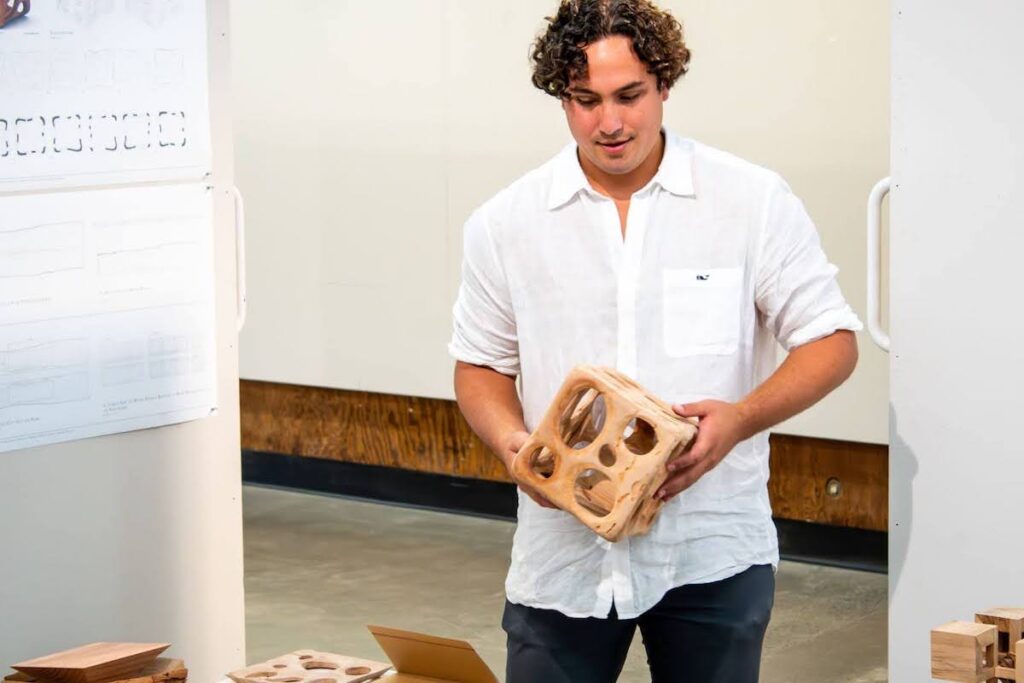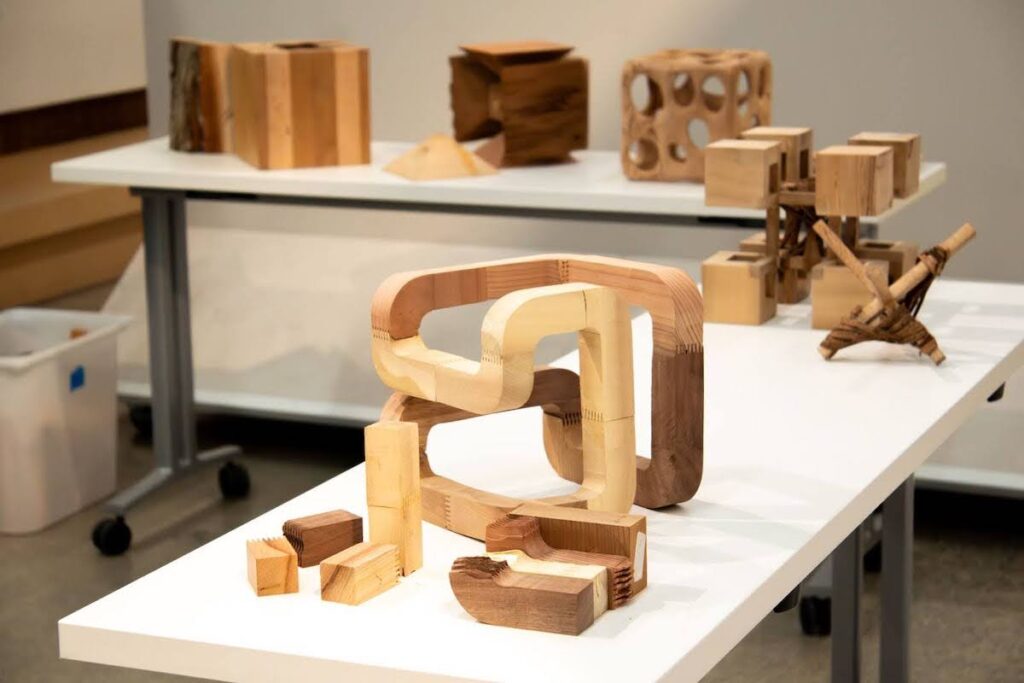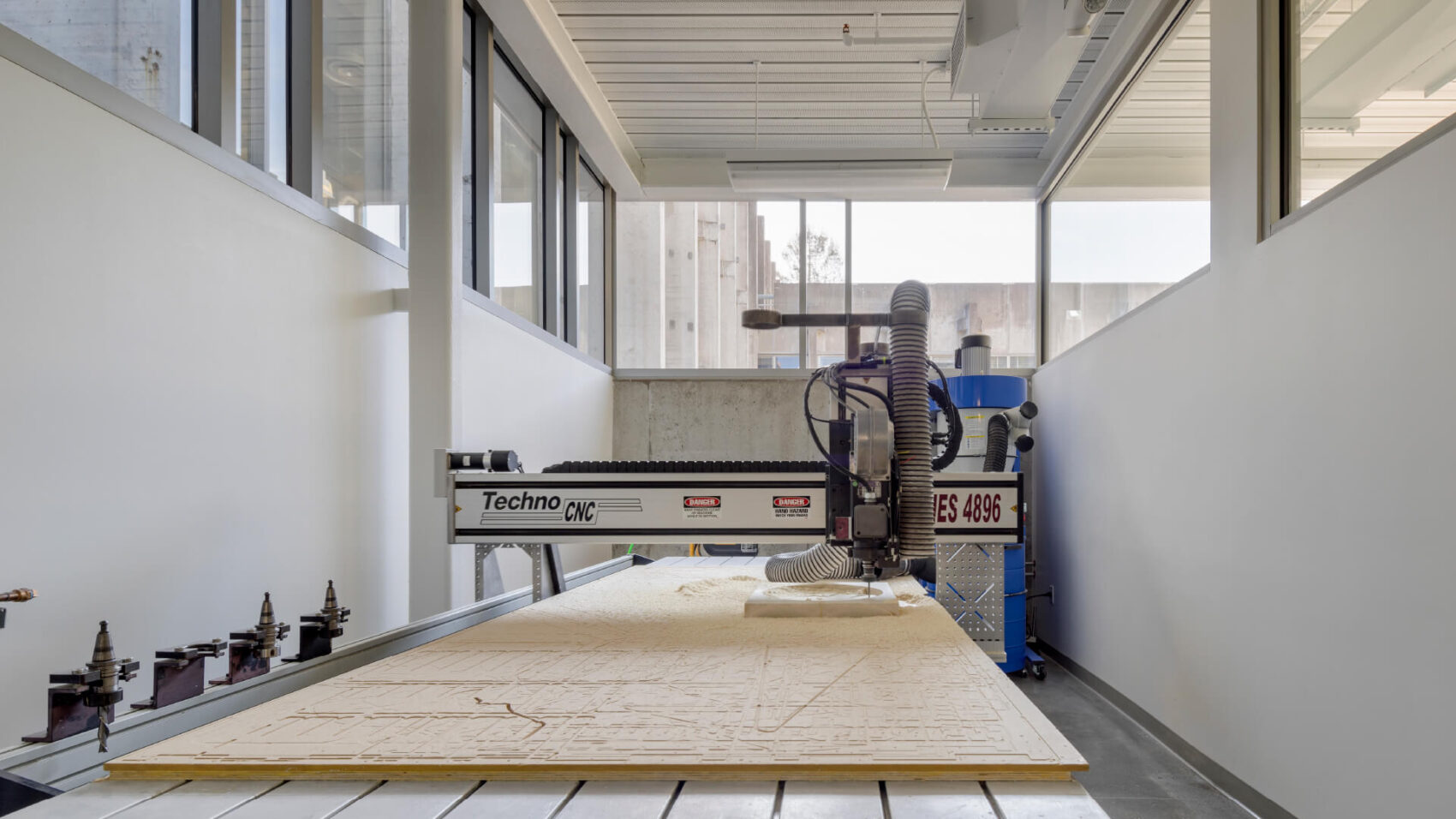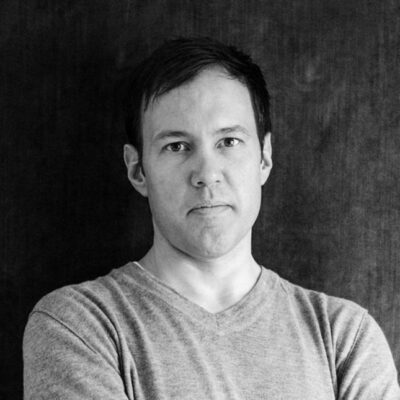Master of Advanced Architectural Design (MAAD)
In Berkeley’s post-professional Master of Advanced Architectural Design, you’ll be part of a small cohort working closely with a faculty director in an experimental studio setting. The two-semester studio, at the core of the program, offers you the time and space to delve deeply into research and design questions. You’ll also take seminars and lectures in design theory, history, digital applications, and building technologies that complement the studio theme.

ABOUT THE MASTER OF ADVANCED ARCHITECTURAL DESIGN
The rotating MAAD curriculum theme, centered on a novel building material and/or construction technique, is set by the program director, who is joined by a team of faculty from the Department of Architecture and the College of Environmental Design.
Students who complete the program receive a Master of Advanced Architectural Design (MAAD) degree, which is not accredited by the National Architectural Accreditation Board (NAAB).
CURRENT MAAD CURRICULUM

FOREST — FIBER — FRAME
In the context of the global climate emergency — which demands a renewed interest in wood building – you’ll be immersed in the question of how a shift from “stick” building to “mass” assembly might change architectural design in the coming decades. Over the course of two semesters, you’ll explore how wood processes, structures, and assembly systems can support a reciprocal relationship between forest management and building design.
With California as a point of departure, you’ll investigate wood construction as a material practice, extending from forest management to manufacturing, construction, and waste reclamation. Using the College of Environmental Design’s state-of-the-art fabrication shop, you’ll develop and test novel techniques and materials and fabricate studies and full-scale constructions.
Forest — Fiber — Frame, the ACSA Timber Education Prize–winning MAAD curriculum for 2024–2025 and 2025–2026, is led by Assistant Professor Philip Tidwell.
PREVIOUS MAAD THEMES
Past MAAD cohorts have investigated earth architecture, with Ronald Rael, and lignin, with Maria Paz Gutierrez.
- Earth Architecture
- Lignin and Lining
- Abiotic-Biotic Corporations (ABC) for Indoor Health,
2023–2024, Faculty Director: Ronald Rael
Soil, a mixture of geological and biological ingredients, is also humankind’s oldest, and most widely used building material. In this year-long research studio, students will explore earth as an ancient, traditional, contemporary, and future material for the creation of buildings, particularly through computational design and additive manufacturing. Participants in the course will explore the fundamental tools for the manipulation of clay based materials and develop workflows that employ parametric modeling techniques in Grasshopper to speculate on how the humble material beneath our feet can result in surprisingly novel forms of architectural innovation. California is the ideal testbed for this experimental studio as there is a long tradition of building with earth in the state, as well as the larger region. Field studies will allow students to engage directly with examples of the forces that have shaped earthen architecture as well as the forces that have instigated its decline in the past century. The primary objective of the studio is to explore how earth can reassert itself as a material that responds to contemporary issues and technologies today.
2022-2023, Faculty Director: Maria Paz Gutierrez
Plants undergo various protocols that inhibit decomposition. Strategies can range from the secretion of plant resins to mineralization. Vegetal resin secretion is generated to protect from pathogens including fungal deterioration particularly in woody species. Depending on the plant, protection mechanisms can also be accompanied by morphological changes in their tissue, producing encapsulation. Additionally, plants can undergo mineralization processes, including wood petrification inhibiting aerobic decomposition.
In the petrification process of plants, the bulk of the organic matter decomposes, but lignin remains. The unique material and structural defense strategies of plants are multifold, spanning from resistance to microbial deterioration, harboring pathogens, to preventing water permeation. Along with researching plant microbial protection mechanisms, scientific investigations have recently focused on beneficial synergies of plant tissue with bacteria and fungi for phased degradation and water sorptivity, detoxification, and energy generation. Can defense strategies and intentional incorporation of bacteria and fungi in plant tissue including woods lead to unprecedented material functionalities in the built environment?
This studio will explore new architectural enclosure strategies stemming from this inquiry. Students will explore the design and prototyping of enclosures with plant microbial defense mechanisms and synergy with bacteria and fungi for detoxification, water management, and energy generation. Through it, the studio will foment new models of lignin-based architecture and healthy environments.
2021–2022, Faculty Director: Maria Paz Gutierrez
Focusing on new frontiers in the abiotic and biotic processes of indoor microbiomes, occupants, and health, this studio explored the deep technology and design of abiotic-biotic processes as potential cooperation, having natural material invention at its root. In collaboration with HOK (Paul Woolford- Design Principal), it emphasized the relevance of rendering natural materials innovation that is translatable into practice, as required by pressing health, environmental, and cultural challenges.
Why Berkeley

Offering you a rich intellectual community rooted in the dynamic contexts of UC Berkeley, the Bay Area, and beyond, California is the ideal place to study. As the birthplace of social justice advocacy and the environmental movement, 21st-century California brings issues of equity, urbanization, and climate change into stark relief. Its diverse population, 40 million strong, and its rich and varied environmental conditions — coasts, deserts, mountains, cities, suburbs, exurbs, and agricultural regions — makes it the ideal laboratory for our discipline.
As a UC Berkeley graduate student, you will be studying at the number one public university in the United States alongside the brightest and most passionate students from across the globe. Berkeley’s environment of critical inquiry, discovery, and innovation is informed by a deep commitment to contributing to a better world.
About the College of Environmental Design
When the College of Environmental Design was created in 1959, it was the first in the nation to unite the disciplines of architecture, planning, and landscape architecture, leading the way toward an integrated approach to analyzing, understanding, and designing our built environment. The college emphasizes environmental design as a profoundly ethical practice, inseparable from social, political, economic, and cultural contexts and co-produced through dynamic engagements with diverse communities.
Fabrication Shop + Materials Lab

The College of Environmental Design’s cutting-edge maker spaces and resources — Fabrication Shop, Digital Fabrication Lab, and Materials Store — offer limitless opportunity for students to craft, model, and actualize their studio work.
UC Berkeley begins accepting applications in early September for the following fall term only (no spring admissions). The fall semester begins in mid-August.
HOW TO APPLY
We recommend you start the application process as soon as possible. As a prospective graduate student, you’ll submit your application through UC Berkeley’s Graduate Division. You’ll find lots of useful information on the Graduate Division website, including application instructions and information about funding your education.
- Review university admissions requirements on the Graduate Division website and program admissions requirements below
- Gather materials:
- Unofficial transcripts for each prior college or university attended
- Statement of Purpose. Please respond to the prompt included below and on the Architecture Program Page portion of the application. For general tips on writing the Statement of Purpose, please see Writing the Statement of Purpose on the UC Berkeley Graduate Division website.
- Personal Statement. Please respond to the prompt included below and on the Architecture Program Page portion of the application. For general tips on writing a Personal History Statement, please see the Personal Statement Guide on the UC Berkeley Graduate Division website.
- Contact information for three recommenders
- Resume/CV
- Evidence of English language proficiency, if applicable. For waiver eligibility, visit the Graduate Division website. Please note, Architecture requires a TOEFL score of 100. Our IELTS score requirement is the same as the Graduate Division’s
- Portfolio
- List of relevant publications or presentations
- List of honors/awards
- URL of website where your work is published, if applicable
- Start your application on the Graduate Division website. You do not have to complete the entire application at one time: we recommend you start your application and review it as soon as possible.
- Scroll down and select Master of Advanced Architectural Design MAAD
- Follow the instructions in the application. See below for MAAD-specific instructions and specifications for supplemental materials.
- Pay the application fee. Please note that only domestic applicants are eligible to apply for a Graduate Division fee waiver. The Department of Architecture is not able to offer fee waivers.
- Submit application. Allow yourself at least one hour prior to the deadline to submit your application. Late applications or changes to the application after the deadline will NOT be accepted.
- After submitting your application, you will receive an email from UC Berkeley’s Graduate Admissions Office confirming your submission.
- We strongly encourage you to log back into your application to monitor the status of materials received/processed, such as fee waivers, test scores, and recommendations.
Only online applications (including letters of recommendation) are accepted. All documents, regardless of language of instruction, must be translated into the English language. Transcripts, diplomas, and certificates should be provided in the original language of instruction AND in English. Transcripts must show your full name, degree conferral date, and degree.
- MAAD-Specific Instructions
- Eligibility
Statement of Purpose (500 word max)
Please share your analysis of an aspect of the built environment (architecture, building, urban space, architect, architectural movement, theoretical or historic argument, piece of architecture historical writing, etc.), either authored or vernacular, that has had an impact on your decision to pursue a graduate education in architecture.
Personal History Statement (500 word max)
What does your application not say about you? Please elaborate on a specific experience that has shaped your decision to pursue architecture.
Portfolio
A digital portfolio is required for applicants to the Master of Advanced Architectural Design program.
The digital portfolio should showcase recent, high-quality work and will be judged on both content and overall design. Applicants without professional training may submit work that shows other evidence of creativity (studio art, construction/renovation, furniture design, etc.) and clearly demonstrates interest in the proposed subject field. Any material that is not entirely the applicant’s work must be clearly identified. This includes identifying your role and contribution in any group work, and identifying the use of AI to generate any written or visual content.
The portfolio may contain up to 20 pages of design content and must be saved as a single file in PDF format. It may be in a two-page spread format, and any dimensions can be used.
Please keep in mind the review will take place on monitors of varying size.
As a post-professional program, applicants to the Master of Advanced Architectural Design (MAAD) should already hold a professional degree in architecture or engineering. Students with a Bachelor of Arts (BA), Bachelor of Science (BS) or other non-professional degree who wish to study at Berkeley should apply to the MArch program.
MAAD typically accepts applicants from three categories:
- Students with a Bachelor of Architecture (BArch) from a U.S. program accredited by the NAAB.
- Students with a Master of Architecture (MArch) from a U.S. program accredited by the NAAB.
- Students with comparable training from a non-U.S. institution (typically an MArch, MS, or MEng degree)
*The MAAD degree by itself does not qualify for licensure in the United States. Foreign-educated candidates who wish to obtain an architectural license in the United States after graduation must have their education assessed through a program called Education Evaluation Services for Architects (EESA).
